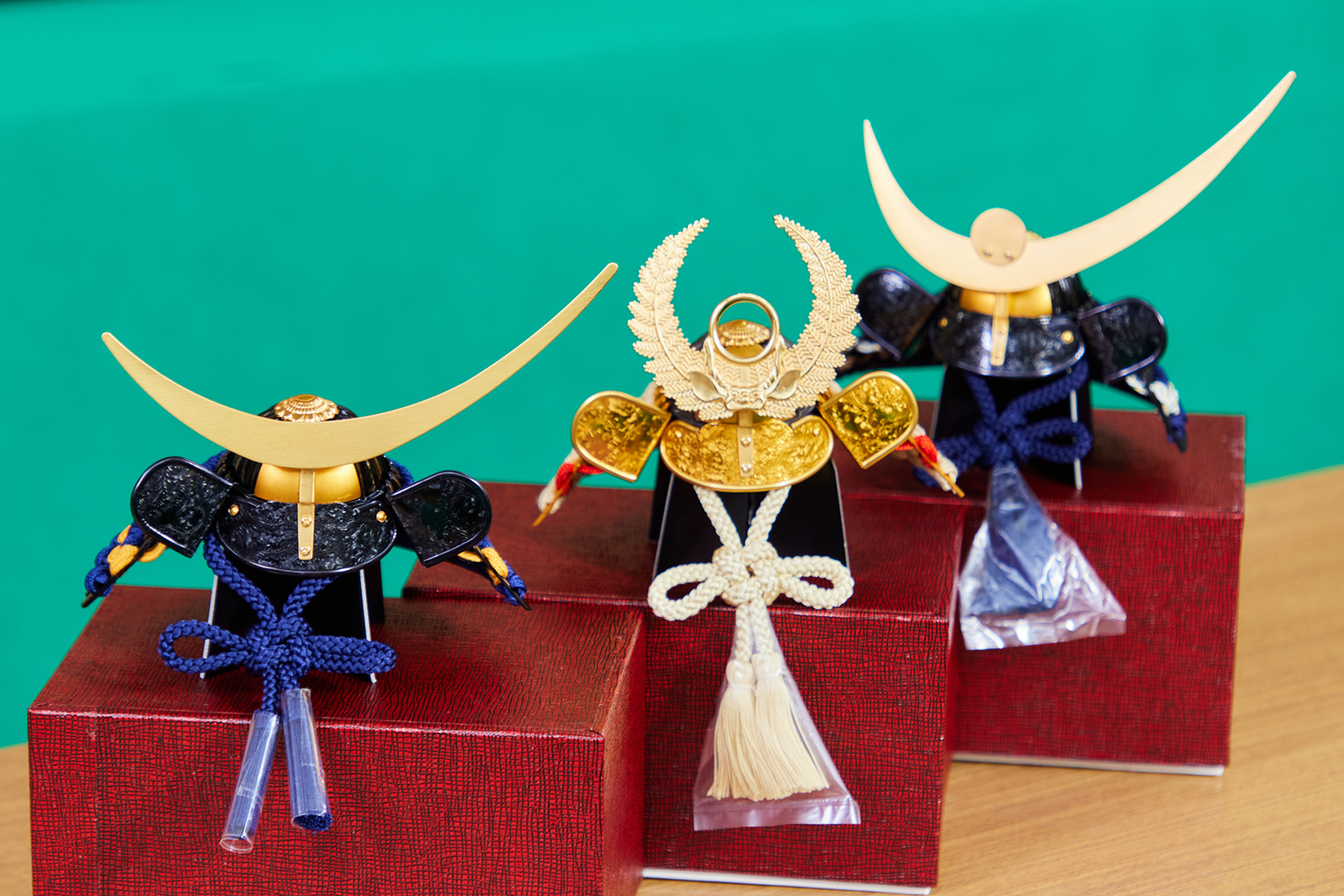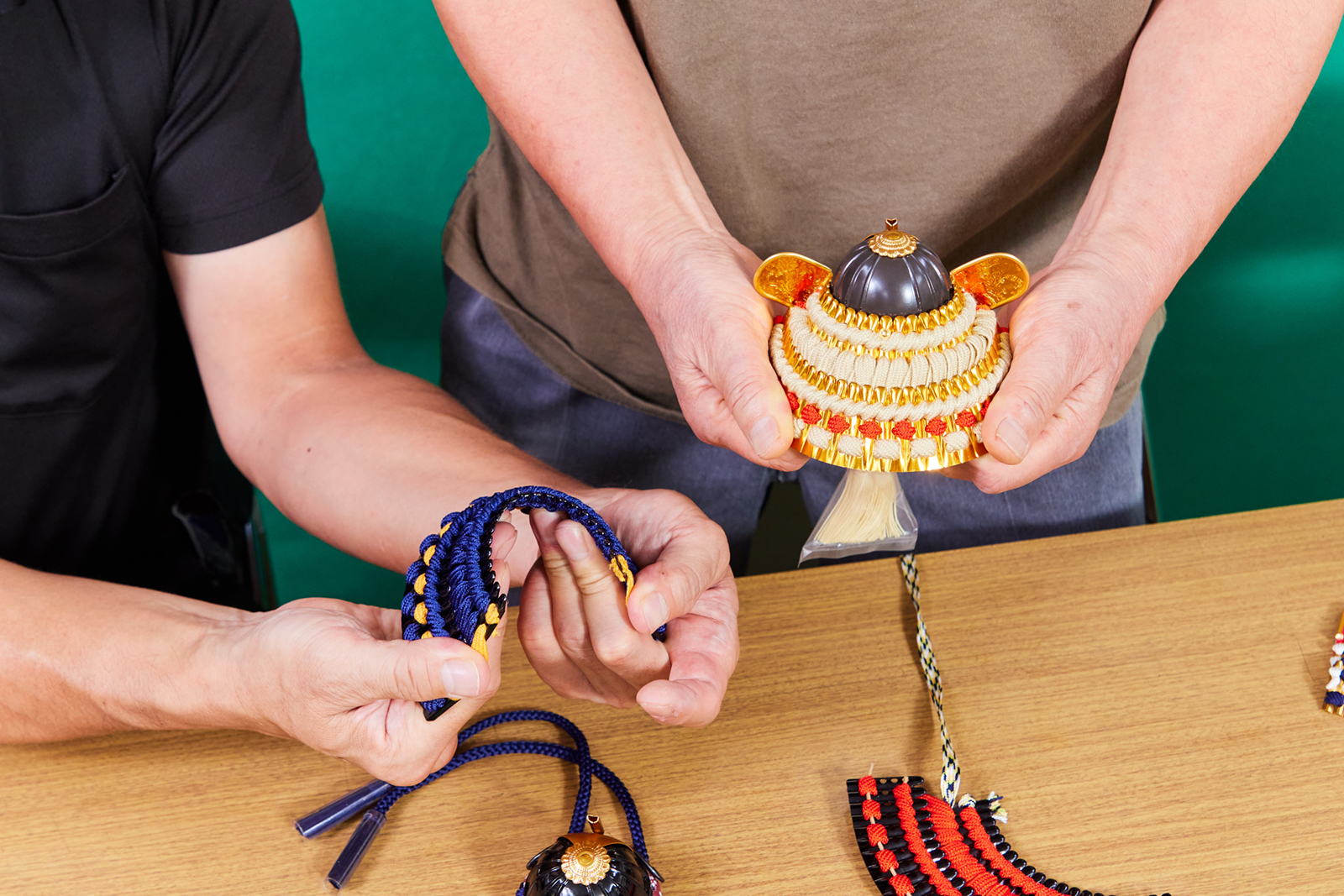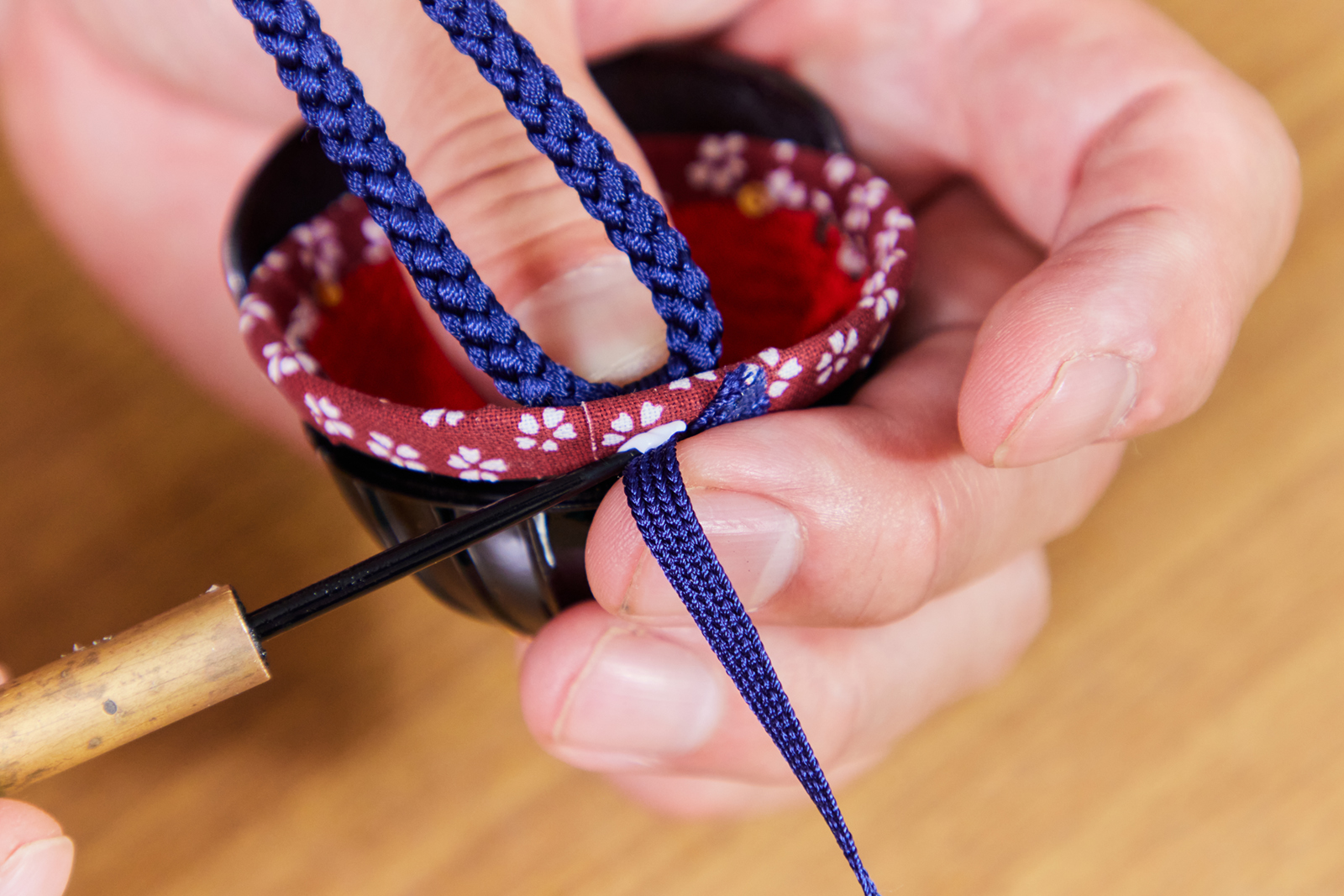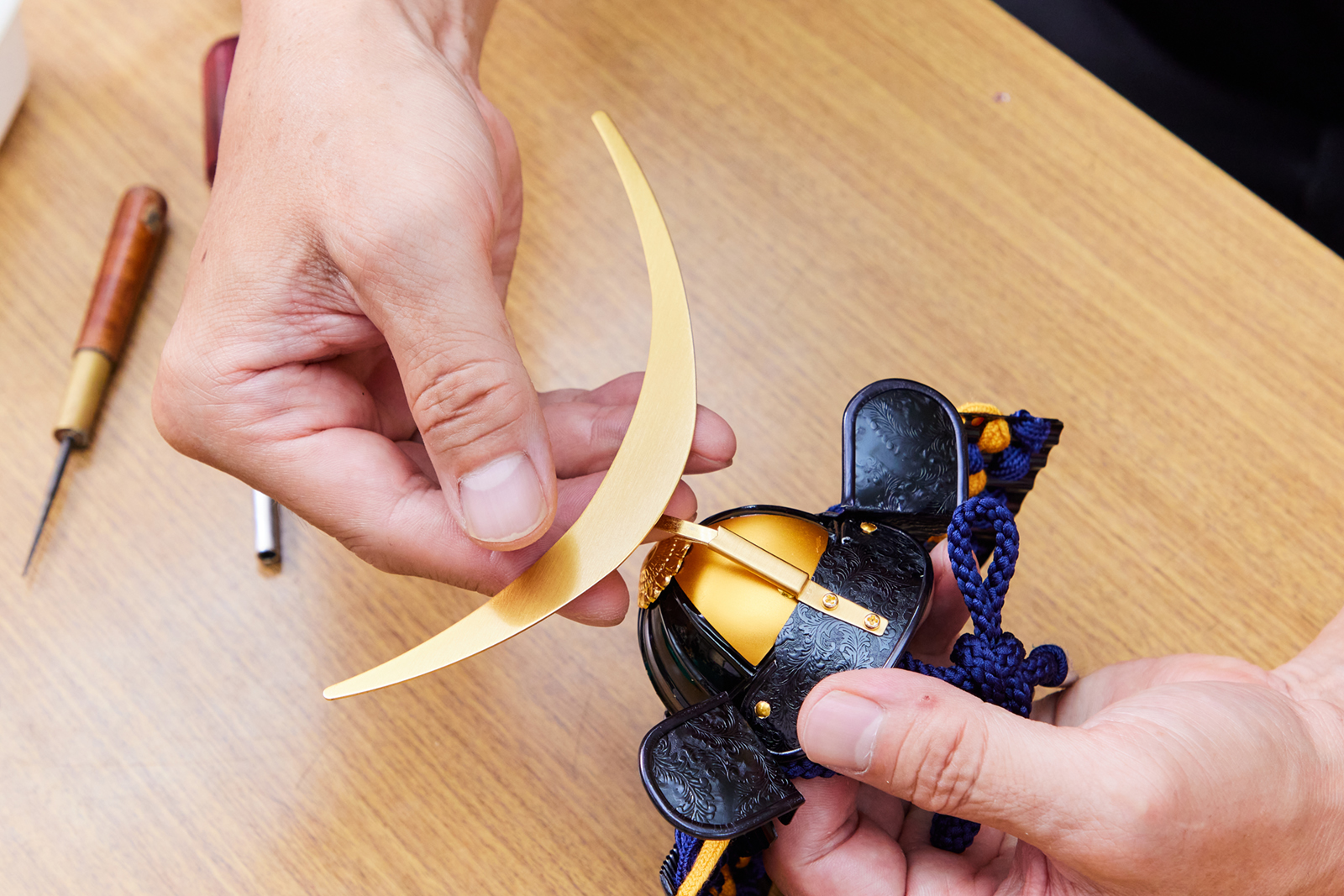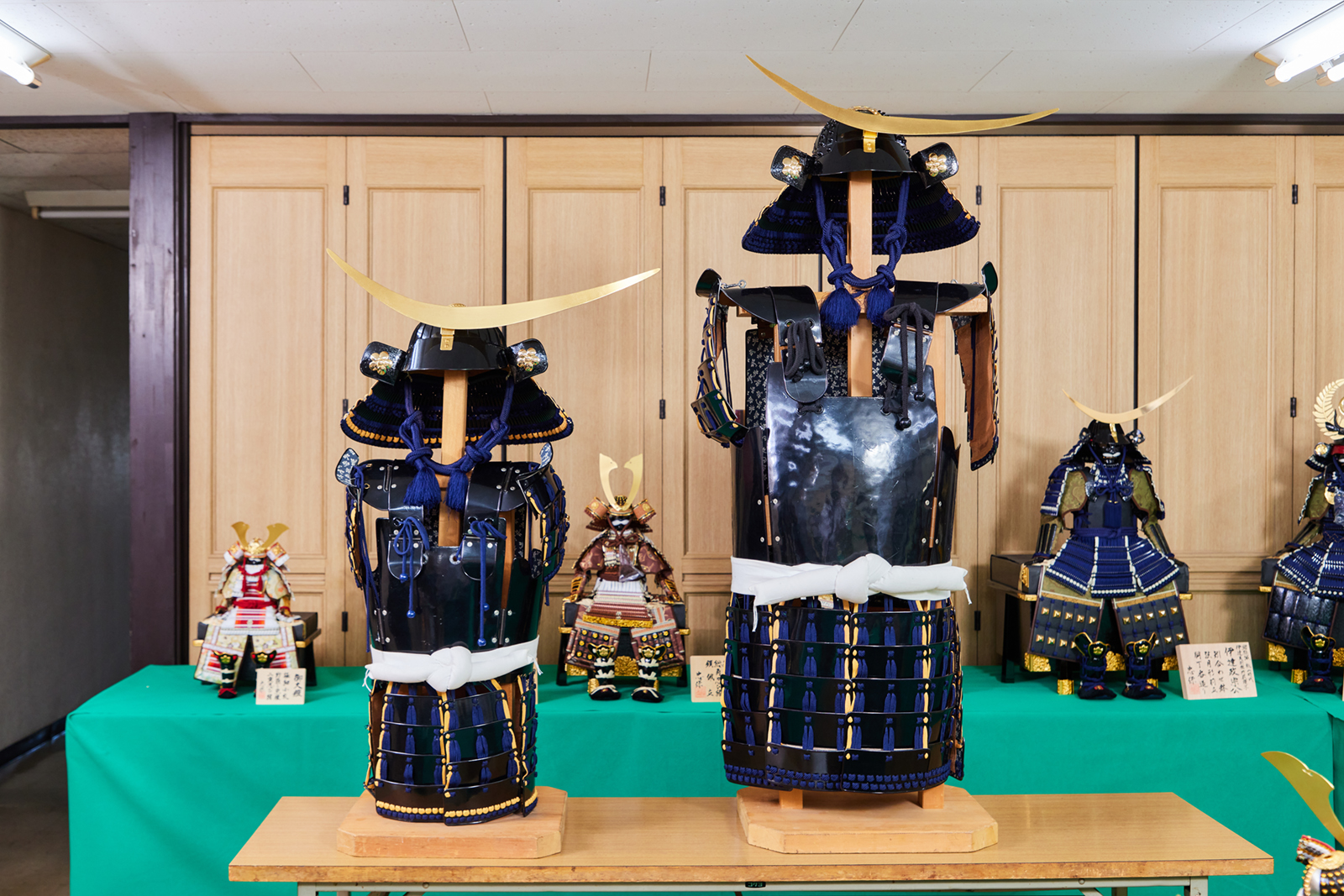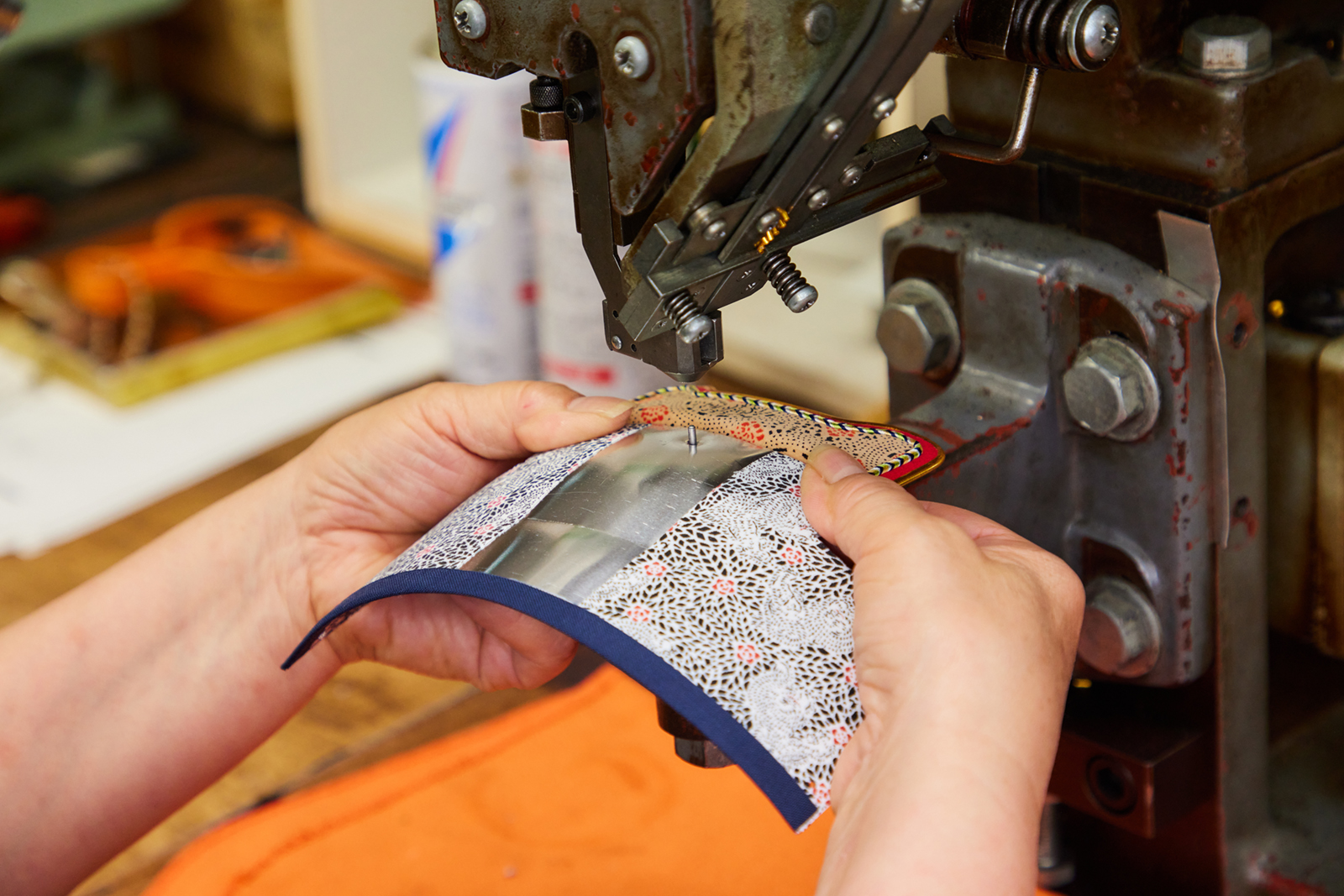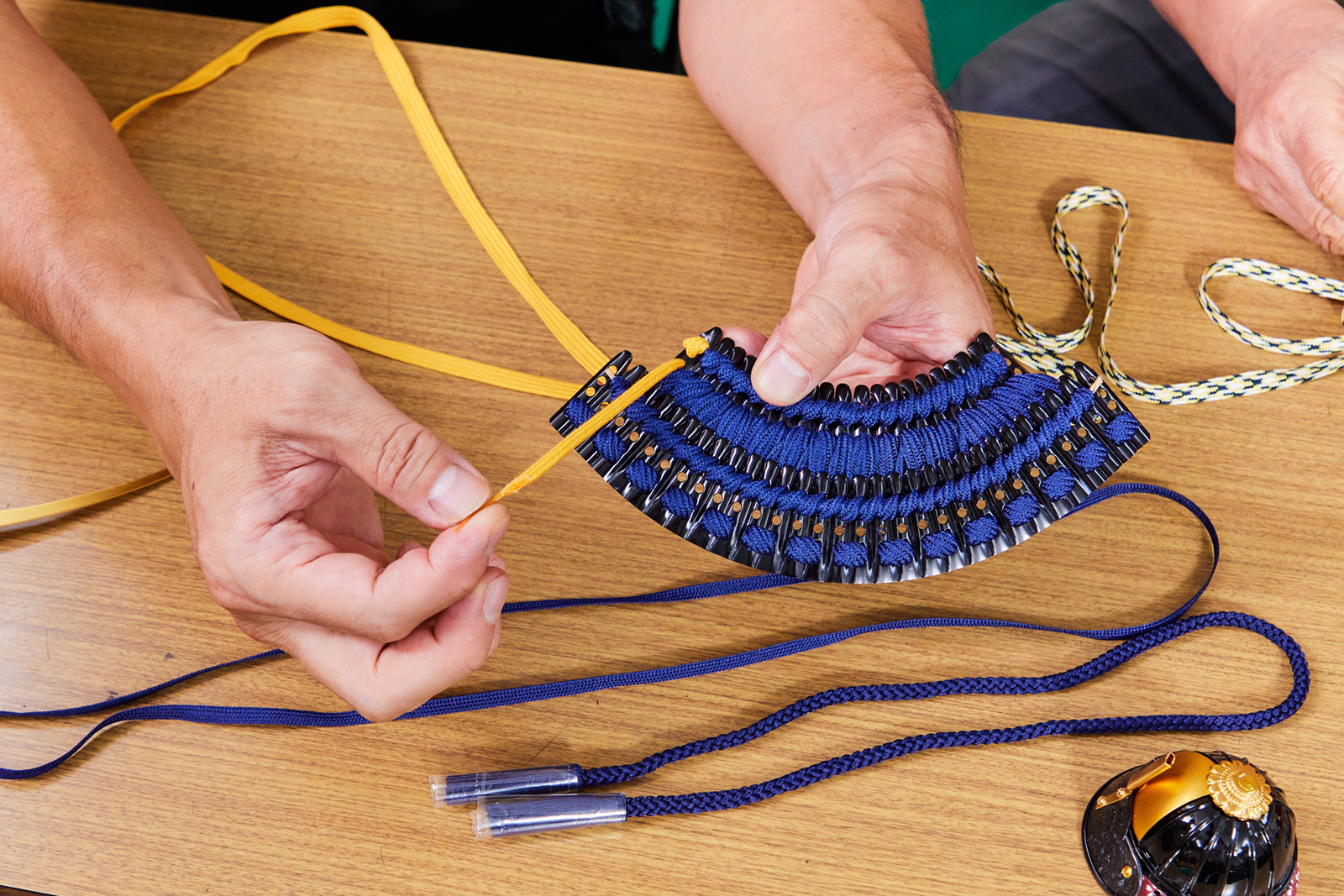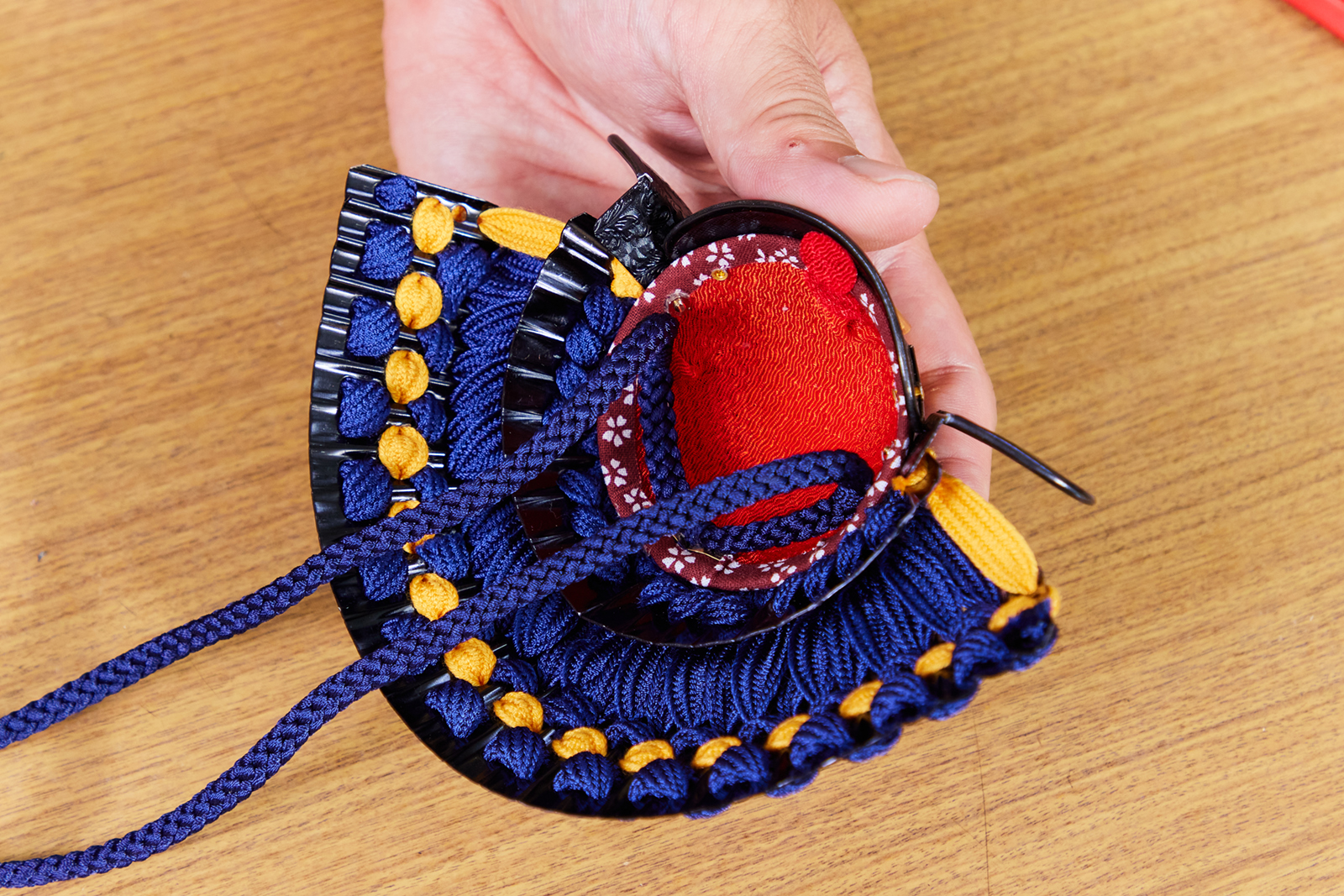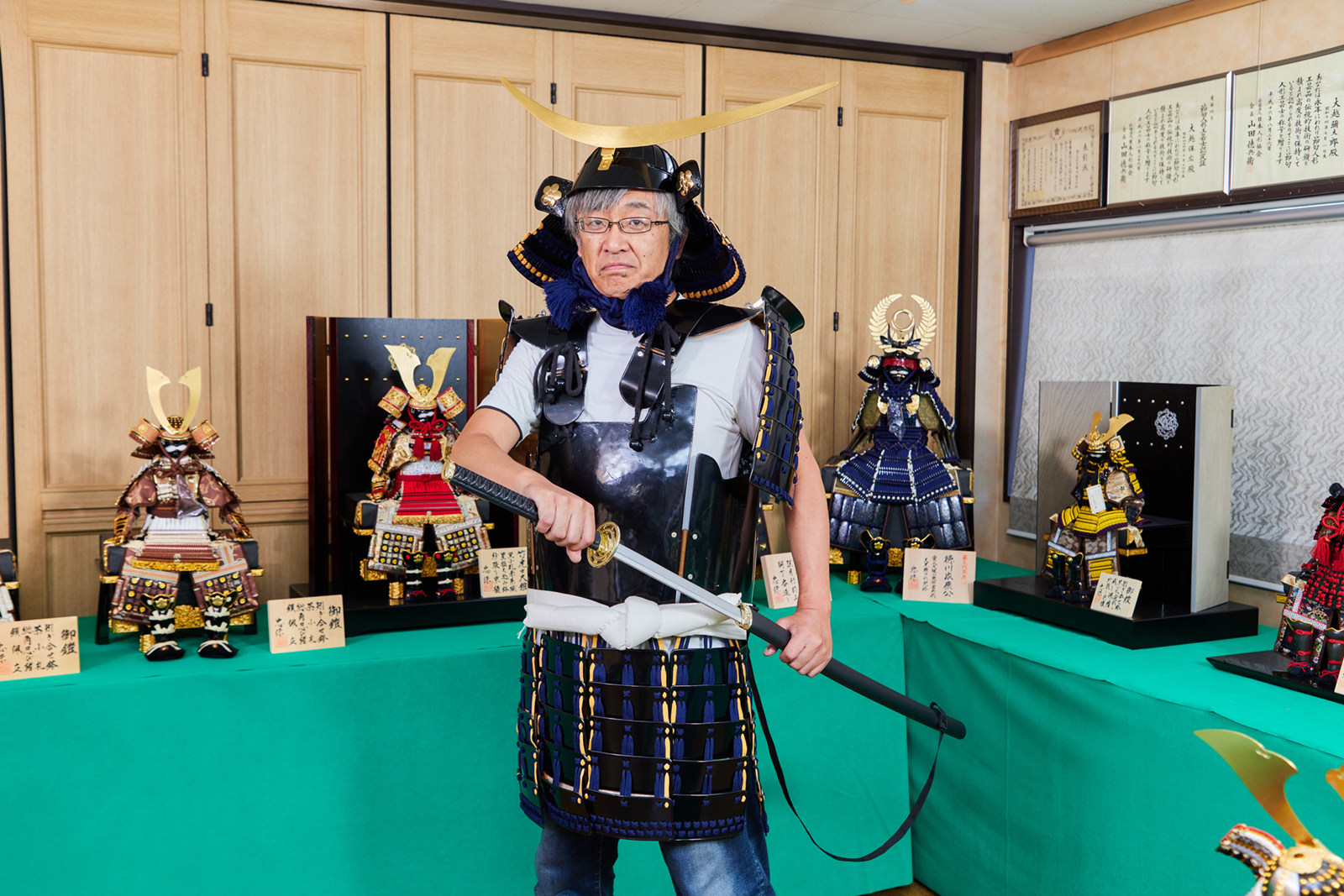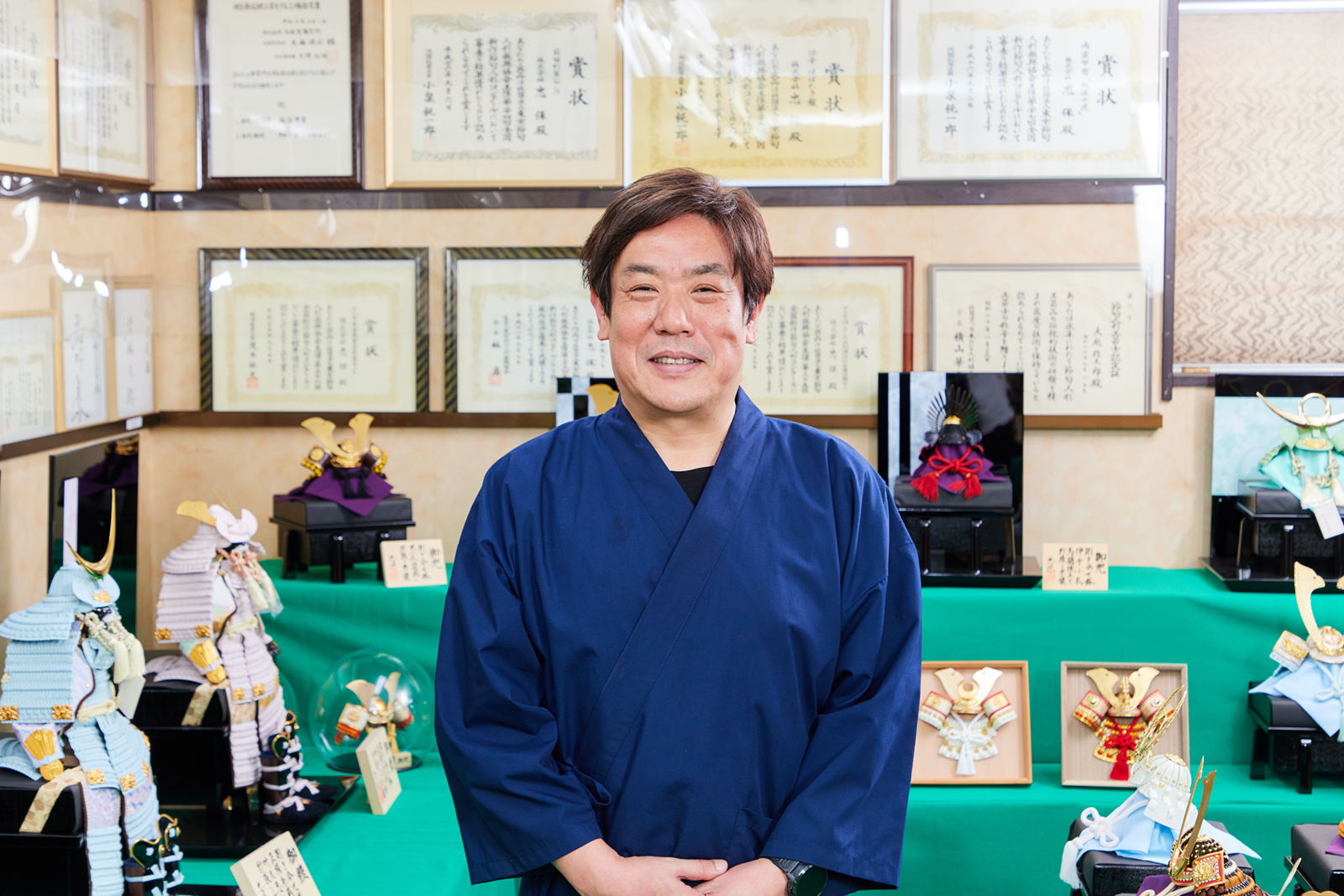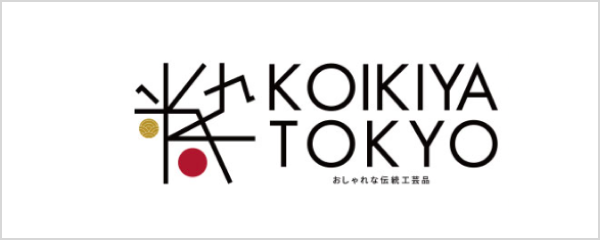Tadayasu’s Armor fuses the methods of Hina-Ningyo dolls crafting techniques with traditional armor crafting.
It is said that Japanese armor as we know it today began to take shape around the 8th century. We, Japanese call armors “Ka-chu”, the first Japanese character in the word, Ka, for armor, means body armor. The second character, Chu, means helmet. From the Heian period onward, when military commanders began riding horses, it developed as protection against arrows. Armor, which required both functionality for survival on the battlefield and the decorative beauty to signify a warrior's status and dignity, was said to embody the pinnacle of craftsmanship from the very beginning, combining the finest techniques in metalwork, lacquerware, dyeing, weaving, and leatherwork.
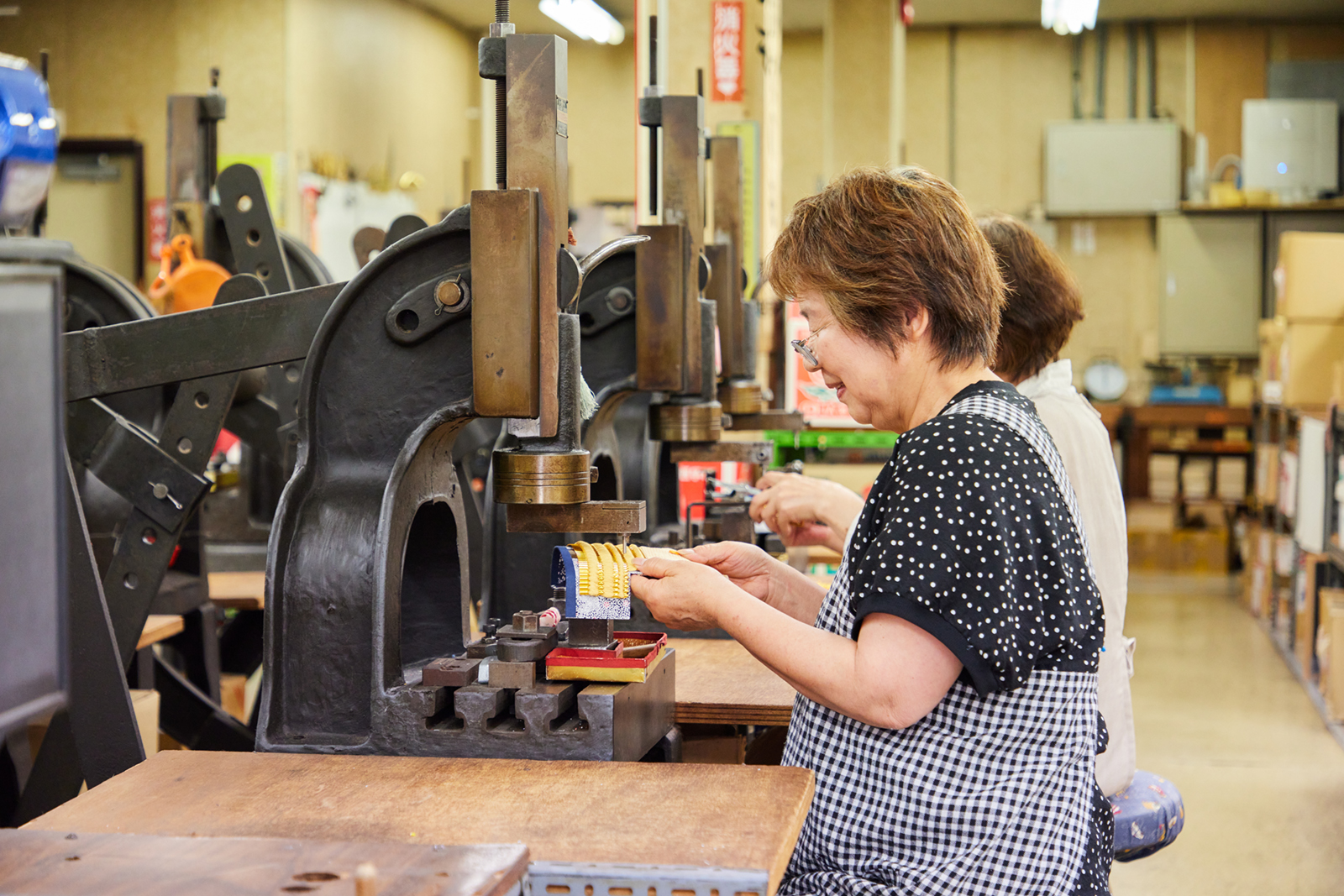
Okoshi Chu was founded in 1947 in Arakawa-ku, by Chu Okoshi, the grandmother of the current shop head. As a child, Chu trained diligently in Hina-Ningyo doll crafting in Shizuoka Prefecture. However, she decided to switch to Gogatsu dolls for Children’s Day crafting because she, “Couldn't bear to hammer nails into Hina-Ningyo dolls.” After apprenticing under an armor-crafting artisan, she founded her shop in Arakawa-ku, Tokyo.
In 1964, following a growth in business, she established Okoshi Chu Mfg., Inc. in Koshigaya City, Saitama Prefecture. Tadayasu's Armor, which fuses the delicate decorative techniques honed through Hina-Ningyo dolls crafting with traditional armor production methods, continues even in today’s modern world to be cherished as a decorative item symbolizing hope for children to grow up healthy.
Design your own original Samurai helmet from 1,768 possible combinations
In this plan, after learning the history of armors, you start crafting your own original miniature Samurai helmet. At the beginning, have a quick tour to the workshop where artisans engage in armor crafting. It is said that over 5,000 processes are required to complete a single set of armors, involving more than 100 artisans. While the processes you can observe at the workshop represent only a fraction of the entire craft, witnessing the dedicated artisans who devote their lives to perfecting their techniques allows you to sense the weight of time that has passed as these traditions have been passed down.
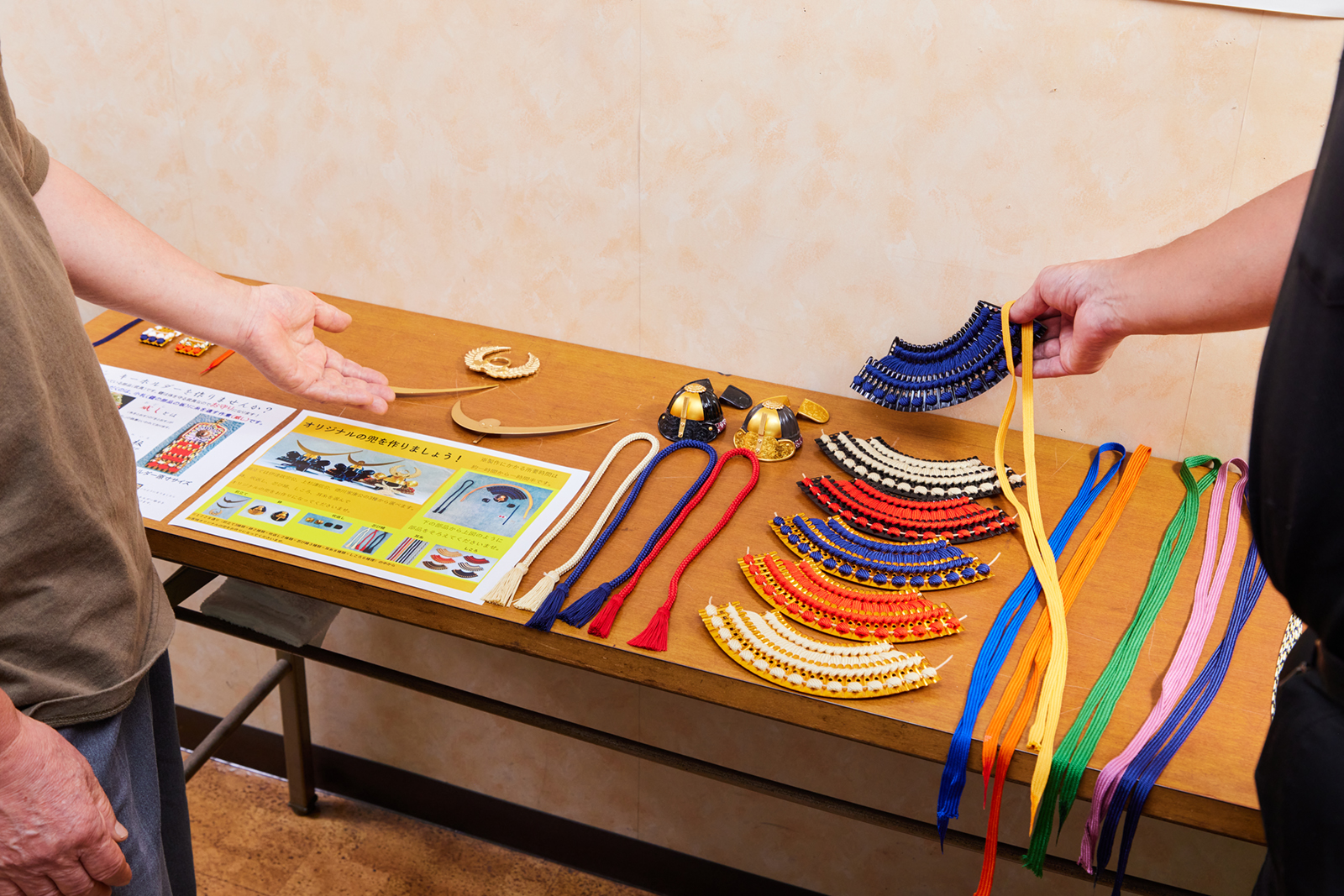
Next comes the main part of this activity: Samurai helmet crafting. There are six parts that make up a miniature helmet modeled after a real Sengoku period (Warring States period) helmet: Maedate (crest), Hachi (bowl), Fukigaeshi (side flaps), Shinobi-no-O (chin cord), Mimi-Ito (ear cord), and Shikoro (side neck guard). Select your colors and design components from options like Maedate of Tokugawa-Ieyasu, Date-Masamune, or Uesugi- Kenshin. There are 1,768 possible combinations of colors and shapes for each part. Choose a unique combination that must be exciting to you, whether it's a design inspired by your ideal military commander or your favorite color scheme.
The helmet combines functionality and decoration. Feel the logic within the beauty.
The crafting activity starts with Odoshi process. The word Odoshi comes from the Japanese word of threading a cord. This refers to the process of threading Mimi-Ito cord through Shikoro, the part that protects the neck. In doll crafting, Shikoro are large plate-shaped pieces, but Shikoro in the Sengoku period were made by tying narrow strips of gold plate called Kozane together with thread or leather cords. Shikoro, with its vividly colored Mimi-Ito, not only accentuates the military commander's sense of presence, but also serves as robust armor protecting the commander's neck from arrows and swords.
The Shikoro embodies both functional beauty and ornamentation and is one of the elements symbolizing the military commander's demands for armor. The meticulous work of threading a single Mimi-Ito through Shikoro allows one to sense the aesthetic sensibility and functionality that took root in the world of the Sengoku period.
After threading Mimi-Ito through Shikoro, it is time to connect each part together. After securing Shinobi-no-O to Hachi that covers the head to fix the helmet in place, and combining Maedate, Fukigaeshi, and Shikoro, finally tie Shinobi-no-O to complete the assembly. The knot used for Shinobi-no-O is called Agemaki-knot, said to have the meaning of warding off evil spirits and misfortune. Make a wish for your family’s health while you carefully craft a beautiful knot, so it will not come undone easily.
With a Samurai helmet that protects your family's future
At the end of your activity, you will feel as if you have time traveled back to the Sengoku periods. Put on replicated armor and feel what it must have been like to be a military commander in the Sengoku period. The armor feels solidly heavy and weighs over 10 kg (approx.22lbs) in total. Let yourself be suffused with the spirit of a military commander and imagine yourself charging across the battlefield while you feel what it means to wear armor.
Mr.Yasuhiro Okoshi, the third-generation shop head, comments, “Samurai helmets are always displayed as a wish for children to grow up healthy in Japan. I hope everyone cherish and treasure it along with the memories of crafting the helmet with heartfelt care.” When displaying your helmet at home, just imagine the bright future ahead for your family, stretching onward from the day of this activity.
In 1947, founder Chu Okoshi, the grandmother of the current shop head, took leave from her doll-making mentor and established her business in Arakawa-ku, Tokyo. The shop’s exquisitely decorated armor is highly regarded both domestically and internationally and lovingly referred to as Tadayasu's Armor. Since its incorporation in 1964, the company has remained dedicated to armor crafting, continuing to produce meticulously detailed armor backed by thorough historical research and extensive experience.
